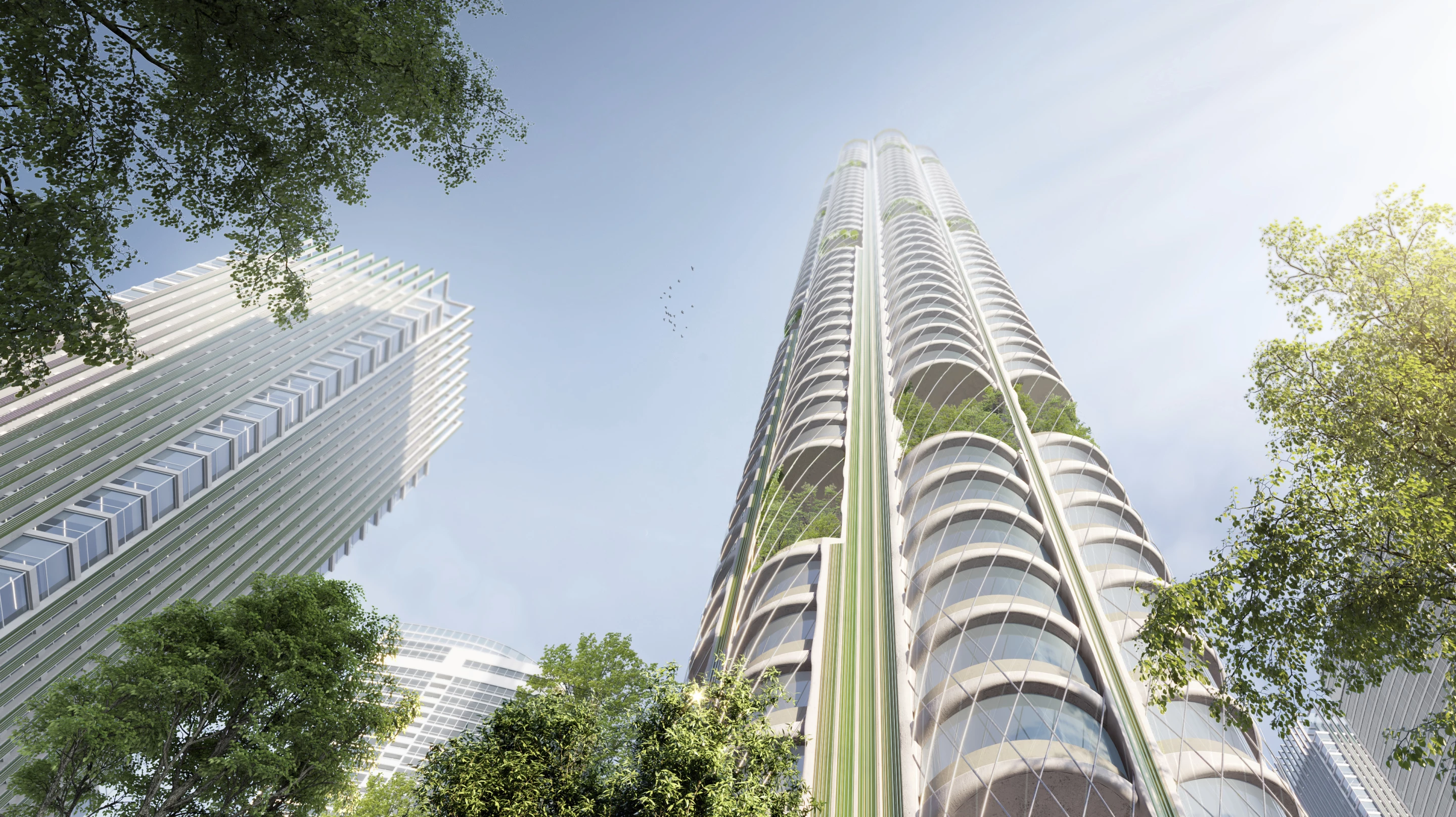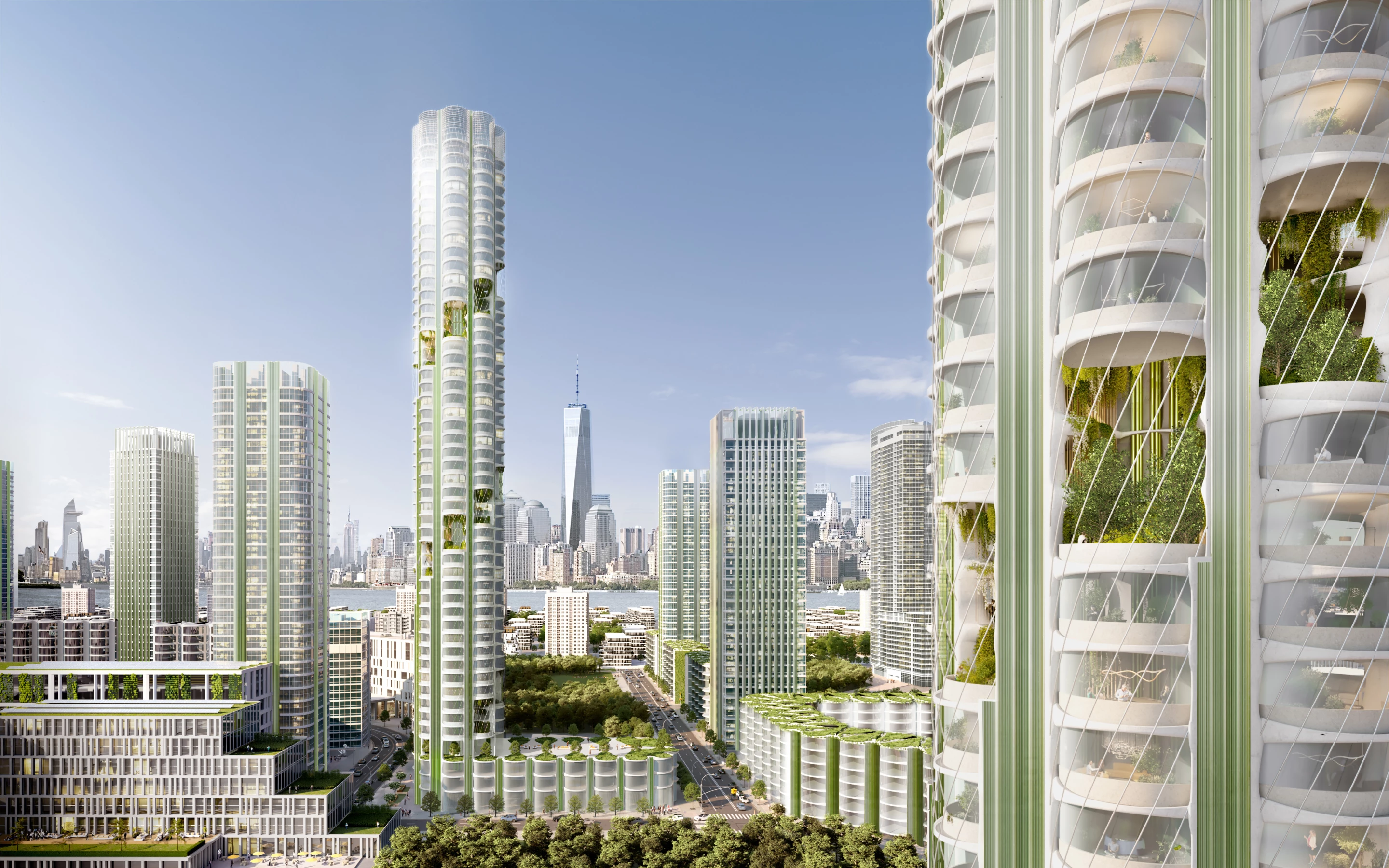An intriguing proposal from high-profile firm Skidmore, Owings & Merrill (SOM) imagines a skyscraper that could capture carbon and actually purify the air around it. The conceptual design, named Urban Sequoia, was created to mark the recent United Nations COP26 Climate Change Conference in Scotland.
The skyscraper would feature an attractive design made up of glazing and greenery and incorporate a podium. It would be built from environmentally friendly materials like hempcrete, timber, and biocrete to reduce the carbon impact of construction by 50 percent, compared to traditional materials like concrete and steel.
Technical details are very light at this early concept stage, but according to SOM the skyscraper would sequester up to 1,000 tons of carbon per year, which it says is equivalent to 48,500 trees. To do this, it would feature integrated carbon capture technology – think the Orca, but on an even larger scale. The idea is that with such measures, the air in the immediate area would be cleaned. Eventually, entire "forests" of Urban Sequoias could transform cities and even change the course of climate change.

"This solution allows us to move beyond net zero to deliver carbon-absorbing buildings, increasing the amount of carbon removed from the atmosphere over time," says SOM. "After 60 years, the prototype would absorb up to 400 percent more carbon than it could have emitted during construction. The captured carbon can be put to use in various industrial applications, completing the carbon cycle and forming the basis of a new carbon-removal economy. With integrated biomass and algae, the facades could turn the building into a biofuel source that powers heating systems, cars, and airplanes; and a bioprotein source usable in many industries."
Though the Urban Sequoia is a very ambitious proposal and seems unlikely to be realized any time soon, global construction is estimated to account for almost 40 per cent of all CO2 emissions worldwide and there are growing calls to tackle the issue throughout the construction industry. One result of this is the growing popularity of timber buildings, which offer a genuinely sustainable alternative to concrete.
Source: SOM






